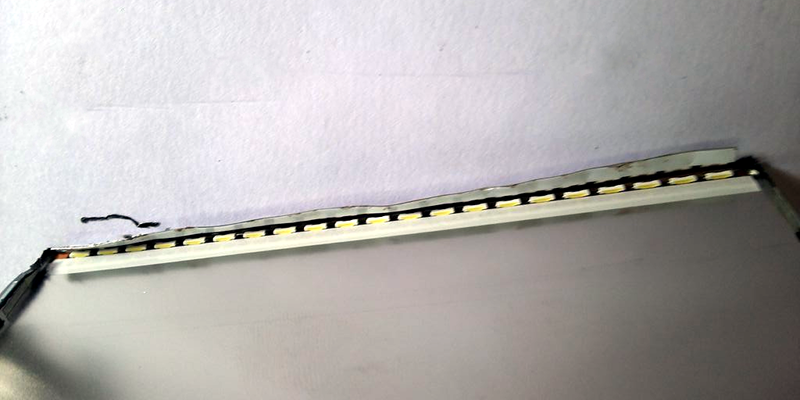We always find it funny when we see ads for modern LED TVs. These TVs don’t use LEDs to show the picture. They are nothing more than LCD screens with LED backlighting instead of cold cathode fluorescent lamps. [Akshaylals] had a few LCD laptop and phone panels that were defunct and decided to recycle them to get to the LEDs within.
Most panels are lit from one or two edges with a bar of LEDs. You only have to peel off some tape and plastic. If you wonder what all those plastic sheets do, see the [Engineer Guy’s] video, below.
[Akshaylals] was afraid that trying to desolder the surface mount LEDs would damage them so instead he simply cut the strips into smaller pieces. To demonstrate the usefulness of the LEDs, he made some large 7-segment LED displays, using two of the “free” LEDs on each side of each segment.
Some super glue and hot glue along with some small wires put everything together. You’d just want to be careful about the polarity of the LEDs which you can check with an ohmmeter. Probably a good idea to make sure they are working before you glue them down, too.
For a test, there’s an LED driver board that lets an Arduino drive the whole affair with 8 pins. The plan is to eventually use the bright white display in an alarm clock project.
You don’t see many non-LED backlit LCDs anymore, but it is possible to convert. Keep in mind that OLED panels are totally different, so tearing those up isn’t likely to produce an LED strip.
















Only problem with “LED on a strip” is getting something useful to solder on.
“don’t see many non-LED backlit LCDs anymore”
…except when there are a dozen at a time each thrift store visit i make. ..and every time i go to a fast food store with screens showing orders to employees. and when they’re at every grocery store register.
Not as bad, just remove one diode from each segment and run some ultra thin wire (twisted clock wire * 5 strands) as this is very flexible and ideal for repairs.The removed diodes can be repurposed as GBC backlights etc.
I’ve been playing with backligts for over a decade now, for various purposes, and this has led to create 4014 7-segments displays such as #DYPLED :-)
LED strips are less dangerous than CCFL (no glass, no mercury vapour, no HV…)
Love high voltage. Admittedly prefer voltages far higher than you’d usually find running compact fluorescent lamps.
That’d be nice, except so far in every TV i’ve had break, it’s the backlight which failed.
I have removed the lcd panel, all unnecessary hardware and made a nice light out of a few tv’s. Be sure to turn tv to maximum brightness before disassembly.
You can also get three color LED light bars from document scanners.
> We always find it funny when we see ads for modern LED TVs. These TVs don’t use LEDs to show the picture.
What a refreshingly true opening statement. Though most people don’t know that and are still being played by marketing…
You can remove polarizing and LCD layers and use whole backlight assembly as nice panel light with even illumination. Cool for macro photography, SMD soldering and probably some other purposes.
What do you use to power the whole assembly?
I love it, daylight in a box! I have a 65 inch over one workbench at work and a monitor backlight that is edge lit with a diffuser. Its slimness is stuck to the bottom of the shelf above my home bench bringing light to the darkest part.
Getting them to run on the original power board is sometimes as simple as resistor dropping the 13volt supply to 3.3volts and connecting it to (p-on) and (dim) with the tuner board unplugged. Sometimes the 15 minute time on is good enough for stairway lighting or short tasks. Keep hitting the on button it delays the time out. One strip of LED’s on an aluminum strip lights up my shower from outside the curtain for just long enough, 4K former glory.